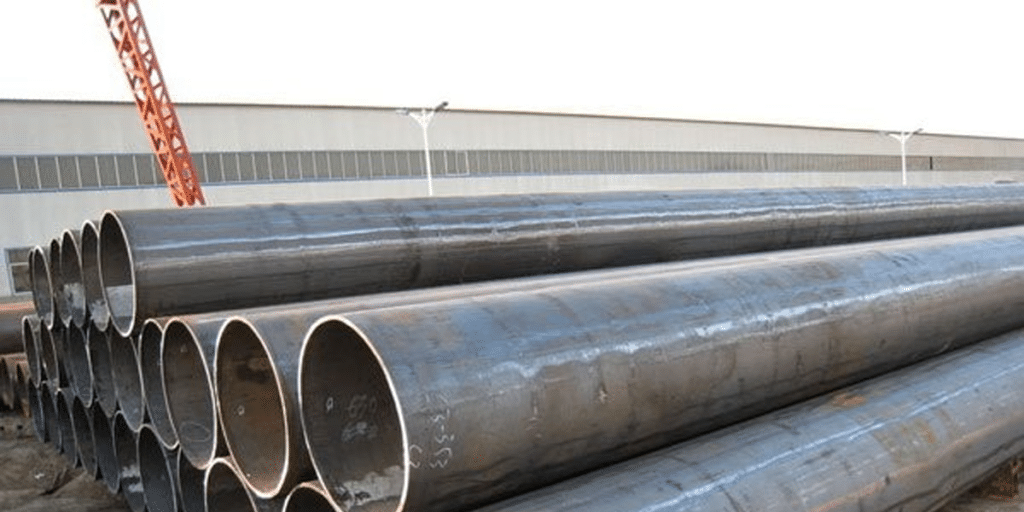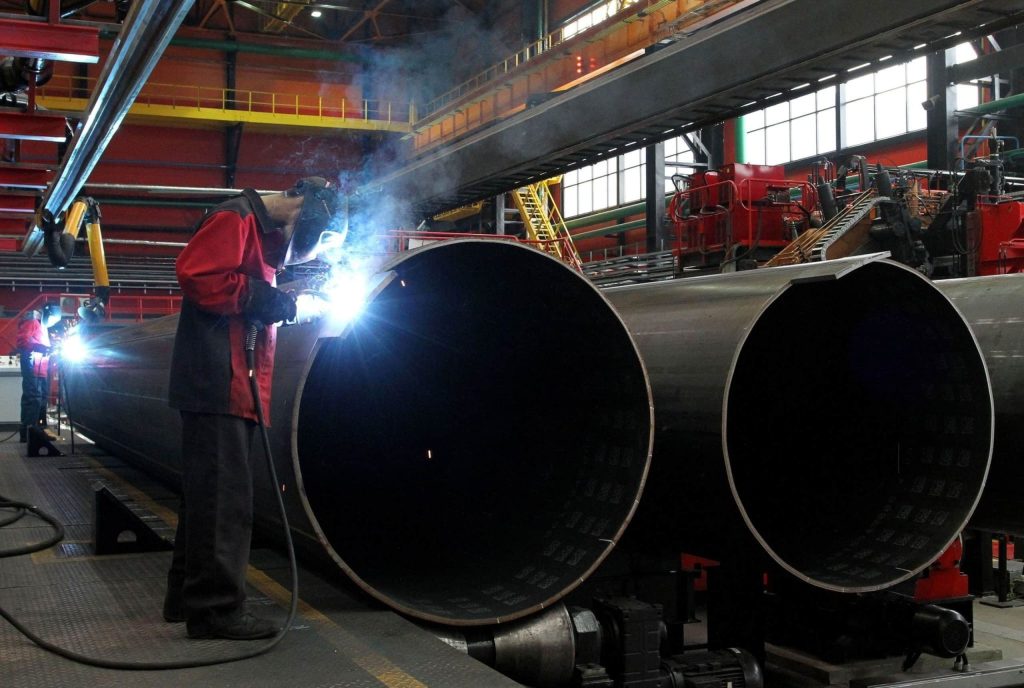ASTM A53 Grade B carbon steel pipe is one of the most widely used pipe materials in construction, oil and gas, chemical, and power industries, thanks to its excellent cost-performance ratio and broad applicability.However, despite its reliability in most applications, improper manufacturing or insufficient quality control may lead to defects that compromise system safety and long-term durability.
This article explores the common defects found in ASTM A53 Grade B pipes, their causes and prevention methods, and how to avoid risks during procurement.
Common Defect Analysis
- Cracks
Cracks are among the most frequent defects in steel pipes, typically appearing in weld zones or areas affected by improper heat treatment. Cracks can significantly reduce the pipe’s strength and increase the risk of leakage or failure under high temperature or pressure conditions.Common types of cracks include:
- Longitudinal cracks: Usually occur along the weld seam or inner surface of the pipe.
- Transverse cracks: Found in thicker pipe walls, often caused by external impact or rapid temperature changes.
Prevention Methods:
- Welding control: Use proper welding materials and parameters to ensure weld strength and toughness.
- Post-weld heat treatment: Apply appropriate heat treatment (e.g., annealing) to relieve residual stresses in welded areas.
- Non-destructive testing (NDT): Conduct ultrasonic testing (UT) or X-ray inspection (RT) to detect and prevent crack formation.
- Deformation and Bending
Pipe deformation may occur due to uneven heat treatment, improper handling, or mechanical impact during production or transport. Such defects can cause uneven load distribution, poor alignment, or sealing issues, posing major risks in systems like boilers and heat exchangers.
Prevention Methods:
- Temperature control: Maintain uniform heating during production to prevent localized overheating and distortion.
- Straightening and calibration: Implement strict straightness correction procedures before delivery.
- Protective handling: Use appropriate supports and packaging to prevent impact damage during transportation and installation.
- Corrosion
Corrosion is one of the most common problems in steel pipe applications, especially in humid, salty, or high-temperature environments.
Although ASTM A53 Grade B carbon steel has a degree of corrosion resistance, exposure to aggressive conditions may still lead to surface oxidation, wall thinning, or leakage.
Prevention Methods:
- Protective coating: Apply hot-dip galvanizing, epoxy coating, or other corrosion-resistant layers to enhance durability.
- Regular inspection and maintenance: Periodically inspect and repair pipes, particularly in marine or chemical plant environments.
- Material selection and design optimization: Choose suitable materials or add protective coatings based on project conditions.
Inspection Methods and Standards
To ensure that ASTM A53 Grade B pipes meet international standards, engineers conduct a series of inspections during manufacturing and before delivery.
- Visual Inspection
This is the most basic and initial inspection method, used to identify visible defects such as surface cracks, bends, dents, or scratches.
ASTM A53 Requirement:
According to ASTM A53/A53M-19, all pipes must undergo visual inspection prior to dispatch to confirm surface integrity.
- Ultrasonic Testing (UT)
UT is used to detect internal discontinuities such as cracks or inclusions, especially along ERW (Electric Resistance Welded) seams.
ASTM A53 Requirement:
For welded pipes, the standard mandates ultrasonic scanning of the weld seam to ensure there are no internal structural defects.
- Radiographic Testing (RT or X-Ray Inspection)
This test identifies internal defects in welded joints, including porosity, voids, or slag inclusions, ensuring weld quality for high-pressure or high-temperature applications.
RT provides a deep, precise evaluation of the weld zone’s internal structure, ensuring the pipe’s long-term reliability.
- Hydrostatic Test
As required by ASTM A53, every pipe must pass a hydrostatic test to confirm pressure resistance and leak-tightness.
In this test, the pipe is filled with water and subjected to pressure 1.5 times higher than its design pressure, simulating real-world operating conditions.
How to Avoid Procurement Risks
When purchasing ASTM A53 Grade B pipes, buyers may encounter several risks, including:
- Substandard materials: Some low-quality suppliers may fail to meet ASTM chemical or mechanical property requirements, causing hidden defects.
- Incorrect dimensions or specifications: Inaccurate sizing can lead to installation issues, project delays, or added costs.
- Lack of proper certification: Some suppliers lack certified quality control systems, leading to non-compliant or untested products.
To minimize these risks, choose a supplier with ISO 9001 certification and in-house testing capabilities, such as LONGMA Steel Pipe.
LONGMA ensures a fully traceable production process and implements strict quality management to guarantee compliance with ASTM A53 Grade B standards.
LONGMA’s Quality Assurance
With over 20 years of manufacturing experience, LONGMA Steel Pipe Co., Ltd. is committed to producing high-quality ASTM A53 Grade B pipes that meet international standards.
All LONGMA products undergo hydrostatic testing, ultrasonic inspection, and radiographic testing, ensuring that every pipe performs reliably under demanding conditions.
Our Strengths:
- In-house Testing Laboratory – Equipped for full ASTM-compliant chemical, mechanical, and NDT testing.
- Comprehensive Quality Management System – Traceability from raw material to finished product.
- Complete After-Sales Support – Offering technical guidance and customized pipe solutions for diverse project needs.
By choosing LONGMA, you ensure that your project achieves higher safety, efficiency, and long-term reliability.
Conclusion
Common issues such as cracking, deformation, and corrosion can severely affect the safety and lifespan of ASTM A53 Grade B pipes.
Through proper manufacturing control, preventive measures, and accurate inspection, these risks can be minimized effectively.
To guarantee consistent quality and project safety, always partner with a qualified, certified manufacturer that provides comprehensive testing and traceability.
LONGMA Steel Pipe is your trusted choice — delivering ASTM A53 Grade B pipes that meet the world’s most demanding standards with reliability, integrity, and precision.



